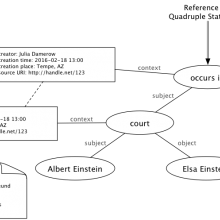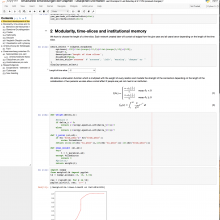In the past, the Department has developed innovative ways of publishing research data so that it is openly available on the Internet. Prominent examples are the digital publication of annotated manuscripts, like “Galileo Galilei’s Notes on Motion” in 1999 and the extensive presentation of the manuscripts of Thomas Harriot (Matthias Schemmel, Klaus Thoden), complex databases bringing analytical data and source together as in “The Years of the Cupola (1417–1436)” (Jochen Büttner) the “database machine drawings” (Wolfgang Lefèvre), the Cuneiform Digital Library Initiative, and the collection of cuneiform tablets and archive of the Hilprecht Collection in Jena (Manfred Krebernik, Matthias Schemmel, Dirk Wintergrün).
These various research websites provide input for ongoing and future research in the Department. It is therefore vital that they are constantly updated, not only to ensure their compatibility with new hardware, but more importantly to ensure their potential migration into new data formats for reuse in new contexts and with new tools. Research publication strategies to integrate the sites into the Edition Open Access and to open them up for interactive work are currently under development. The remodeling of the data behind the research website is crucial for its sustainability. A data model was developed in an early stage of the Sphere project (see above/link), but transformation strategies for the existing projects are still being explored. As a first example, the data provided by “The Years of the Cupola” has been transformed into a RDF structure to become part of the knowledge graph.



